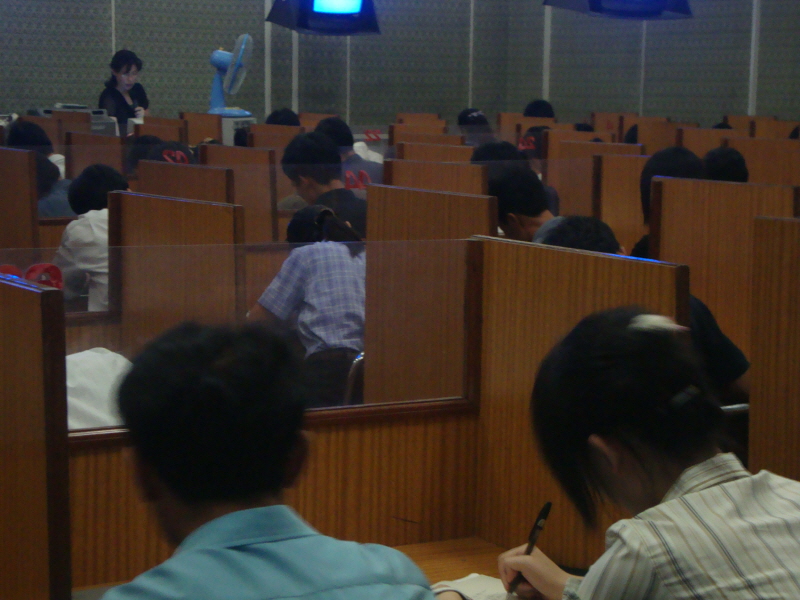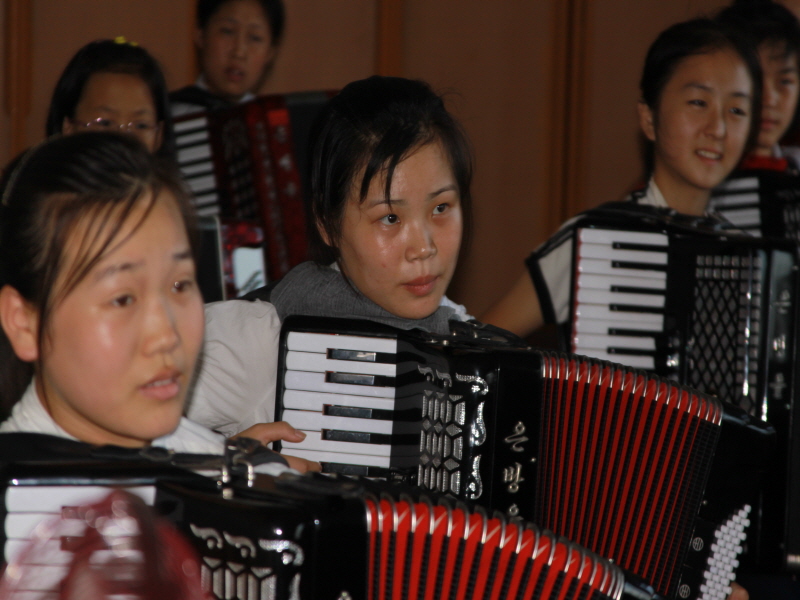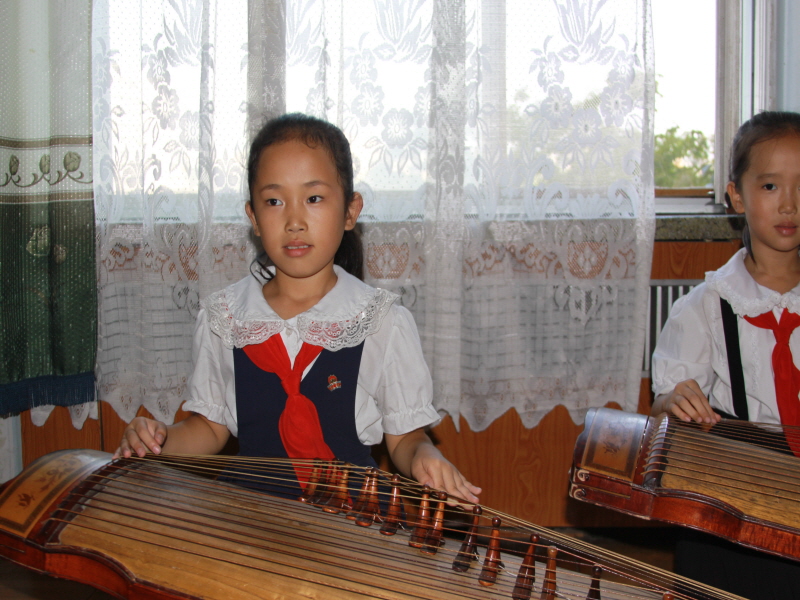|

A
young girl in a school in Mangyongdae
Education
in North Korea is controlled by the government and is
compulsory until the secondary level. Education in North
Korea is free. The state also used to provide school
uniforms free of charge until the early 1990s. Heuristics
is actively applied in order to develop the independence
and creativity of students. Compulsory education lasts
eleven years, and encompasses one year of preschool, four
years of primary education and six years of secondary
education. The North Korean school curricula consist of
both academic and political subject matter.
Primary
schools are known as people's schools and children attend
this school from the age of six to nine. They are later
enrolled in either a regular secondary school or a special
secondary school, depending on their specialties.
They enter secondary school at the age of ten and leave
when they are sixteen.
Higher
education is not compulsory in North Korea. It is composed
of two systems: academic higher education and higher
education for continuing education. The academic higher
education system includes three kinds of institutions:
universities, professional schools, and technical schools.
Graduate schools for master's and doctoral level studies
are attached to universities, and are for students who
want to continue their education. Two notable universities
in the DPRK are the Kim Il-sung University and Pyongyang
University of Science and Technology, both in Pyongyang.
The former, founded in October 1946, is an elite
institution whose enrollment of 16,000 full- and part-time
students in the early 1990s occupies, in the words of one
observer, the "pinnacle of the North Korean
educational and social system."
North Korea
is one of the most literate countries in the world, with
an average literacy rate of 99%.
According
to ancient history texts, formal education began during
the Three Kingdoms period (57 BC-AD 668) under the
influence of the Chinese educational system. Higher
education in all these kingdoms tended to be focused on
the study of Chinese classics of Confucian orientation.
The institutionalization of the civil service examination
in the mid-10th century set the pattern for educational
reform, by directing the role of education toward
preparing young men for public service.
By
the late 14th century, Buddhism gradually declined and so
did the central government. The founders of the
Choson Dynasty (1392-1910) turned to Confucianism as the
source of basic principles for national politics, ethics
and social institutions. Education during the Choson
Dynasty was mainly viewed as a means to prepare young
aristocratic men for future public service.
The
waves of Western culture and modernization that reached
the coast of the "Hermit Kingdom," as Korea was
known to the West, were powerful enough to move King
Kojong to issue an edict in 1882 upholding education as
one of the "pillars" of the nation and opening
the doors of state-operated schools to citizens of all
classes. Yugyong kong-won, Korea's first
school in a modern sense, was established in 1886.
It employed American missionary teachers who taught
English with the aid of interpreters.
|
Religions:
|
|
traditionally
Buddhist and Confucianist, some Christian and
syncretic Chondogyo (Religion of the Heavenly Way)
note:
autonomous
religious activities now almost nonexistent;
government-sponsored religious groups exist to
provide illusion of religious freedom
|
|
|
Languages:
|
|
Korean
|
|
|
Literacy:
|
|
definition:
age
15 and over can read and write
total
population: 99%
male: 99%
female:
99%
|
|
|
Education
expenditures:
|
|
NA
|

Grand
People's Study House 
Pyongyang
School Children's Palace

Pyongyang School Children's Palace |









